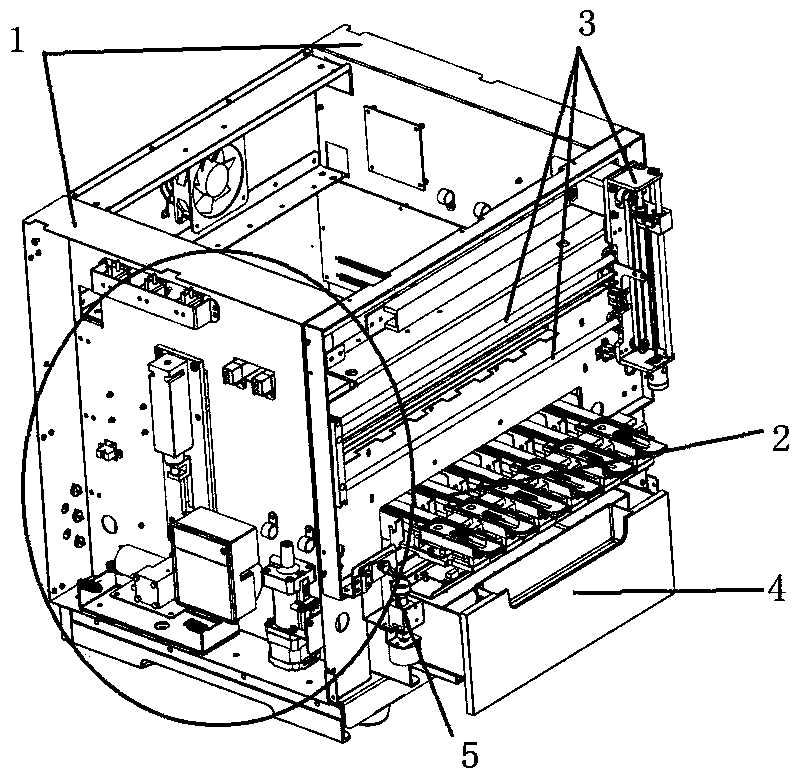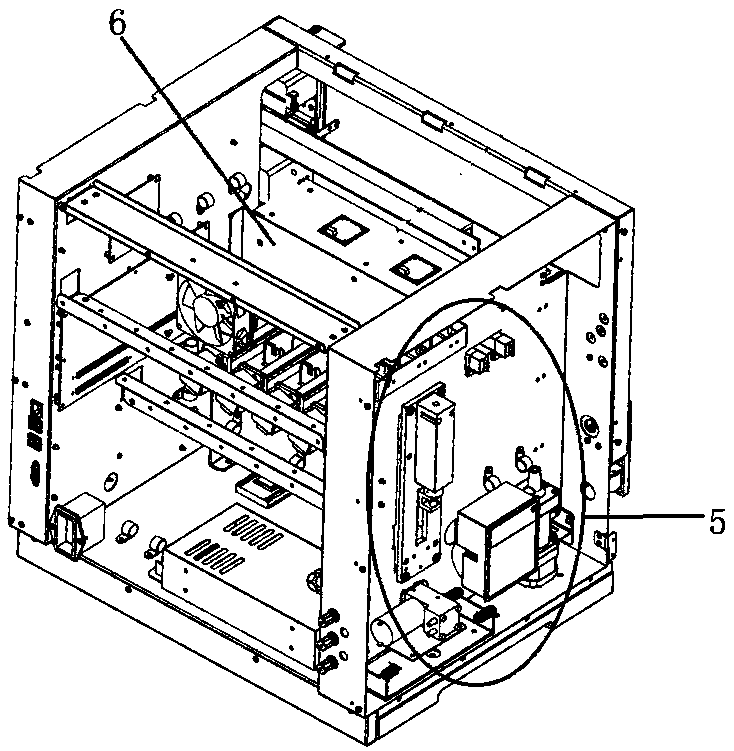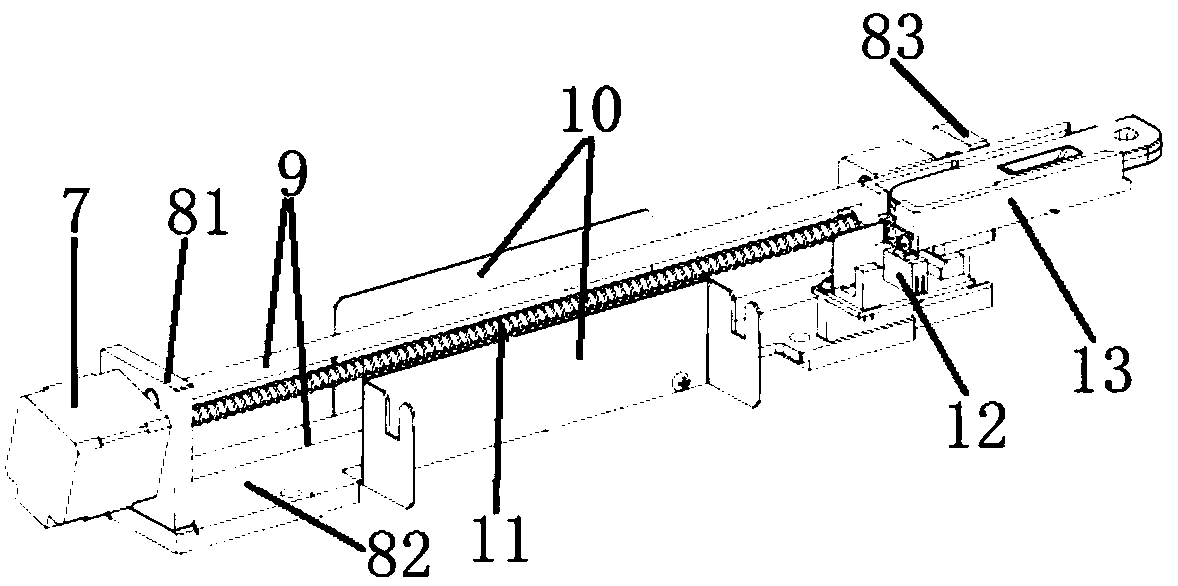Immunoquantitation analyzer
A quantitative analysis and reagent card technology, applied in the field of detection, can solve the problems of poor transmission accuracy of reagent cards, easy to get stuck, and large volume of immunoanalyzers, etc., achieve a simple and compact overall structure, solve poor transmission accuracy, and reduce color rendering uneven effect
- Summary
- Abstract
- Description
- Claims
- Application Information
AI Technical Summary
Problems solved by technology
Method used
Image
Examples
Embodiment Construction
[0055] Such as figure 1 and figure 2 As shown, the present invention provides a quantitative immunoassay analyzer, including the following components: a frame mechanism 1, which is used to fix all moving components in the quantitative immunoassay analyzer; a reagent card moving mechanism 2, which can sequentially follow the reagent card insertion position , detecting the position of the reagent card and kicking the position of the reagent card to move the reagent card for dripping the detection sample in such a sequence that six reagent card holders are set; the sample adding device 3 includes a sample adding needle mechanism and a sample adding needle mechanism moving device, The sample injection needle mechanism and the sample injection needle mechanism moving device complete the suction, spit, and movement of the test sample; the detection structure 6 is used to detect the information on the reagent card, including a black box mechanism and an optical mechanism, and the da...
PUM
 Login to View More
Login to View More Abstract
Description
Claims
Application Information
 Login to View More
Login to View More - R&D
- Intellectual Property
- Life Sciences
- Materials
- Tech Scout
- Unparalleled Data Quality
- Higher Quality Content
- 60% Fewer Hallucinations
Browse by: Latest US Patents, China's latest patents, Technical Efficacy Thesaurus, Application Domain, Technology Topic, Popular Technical Reports.
© 2025 PatSnap. All rights reserved.Legal|Privacy policy|Modern Slavery Act Transparency Statement|Sitemap|About US| Contact US: help@patsnap.com



